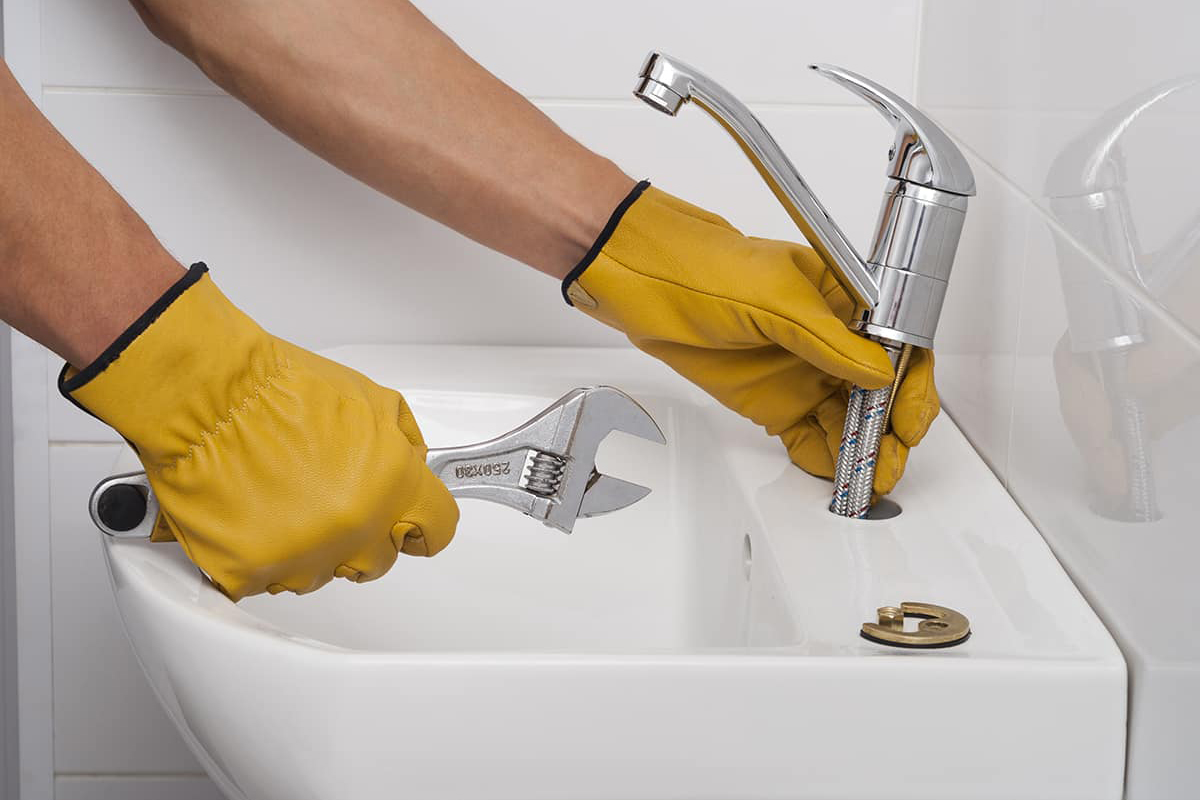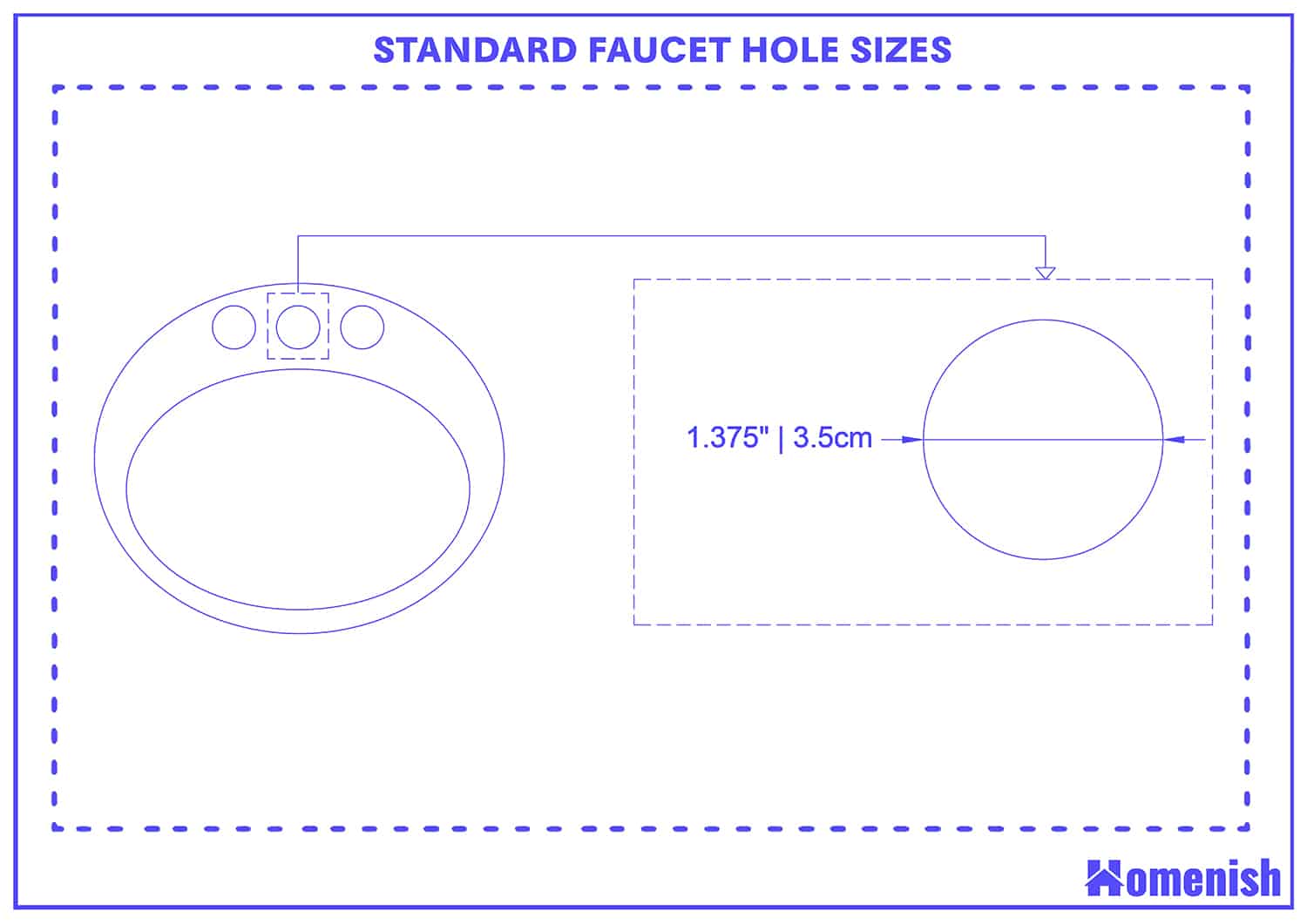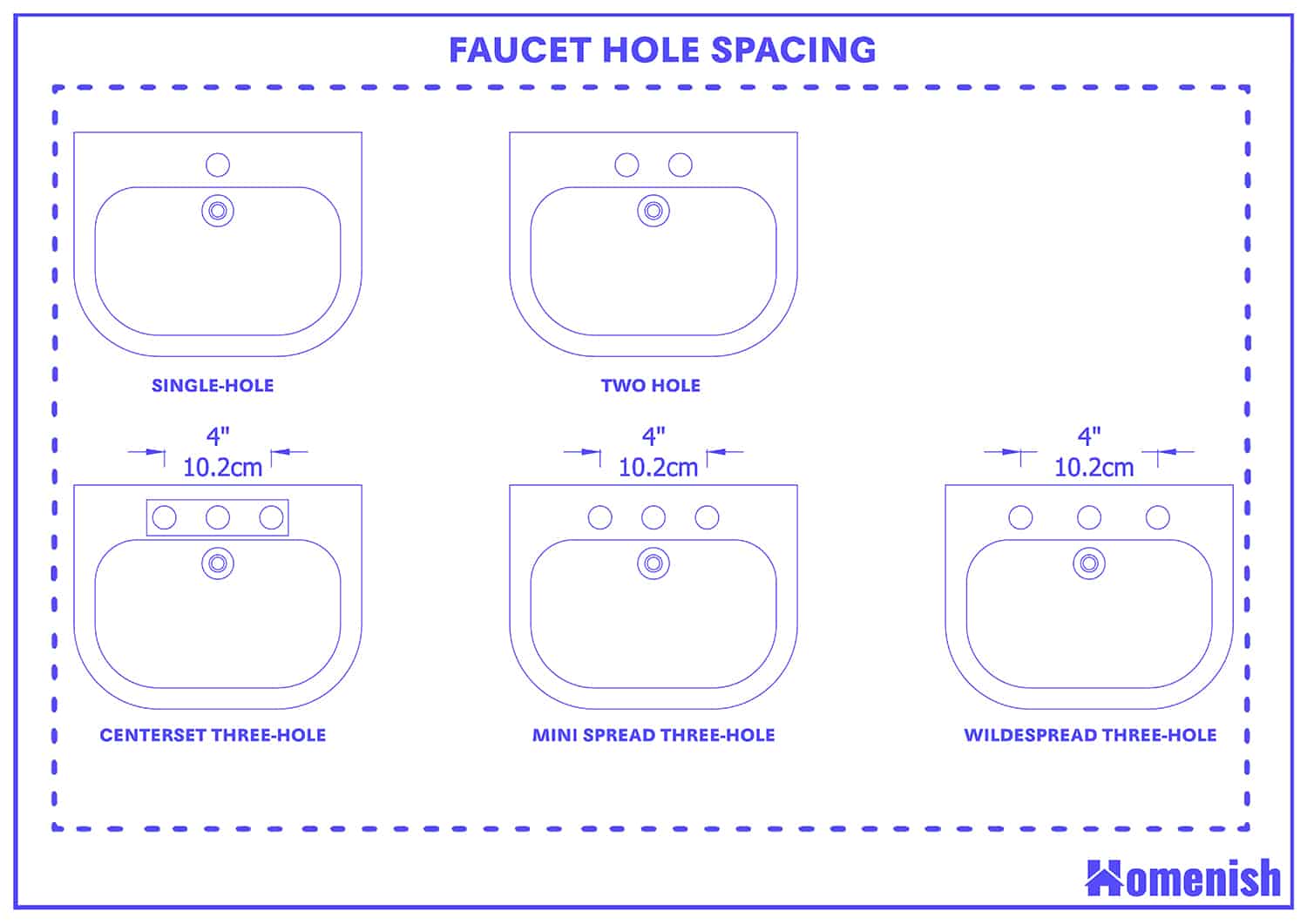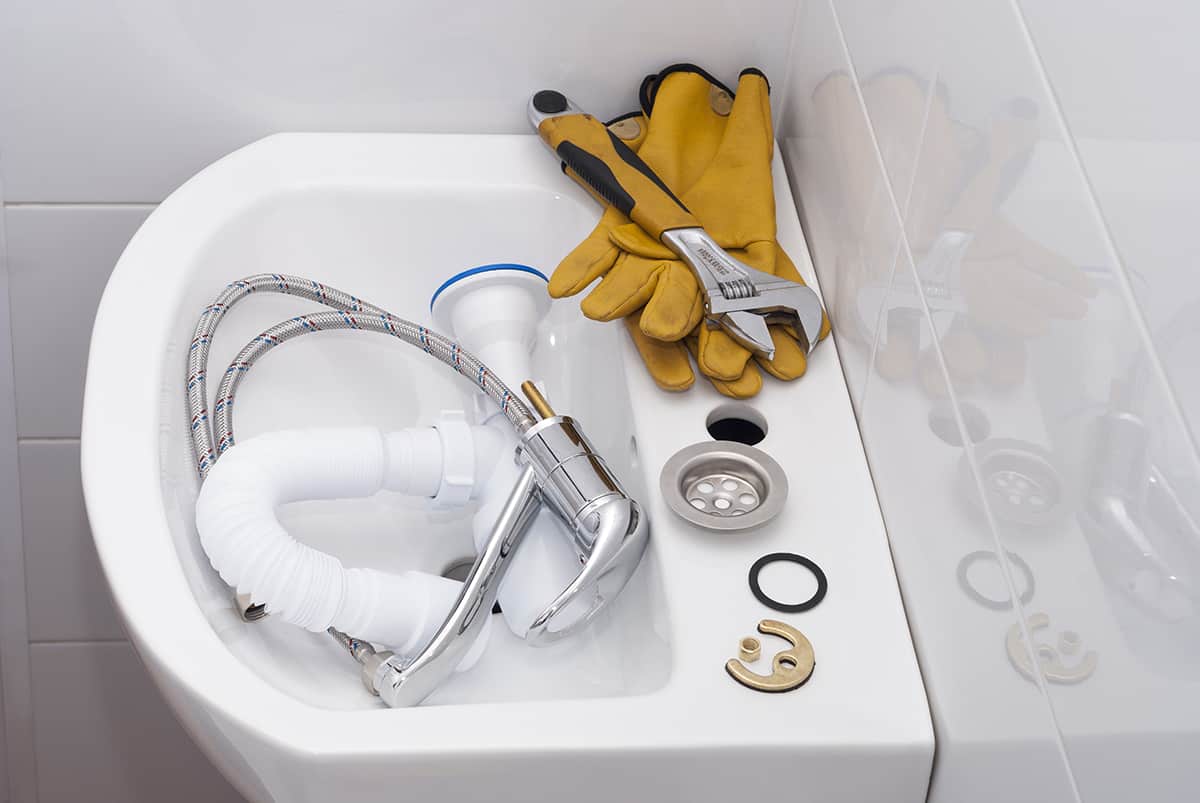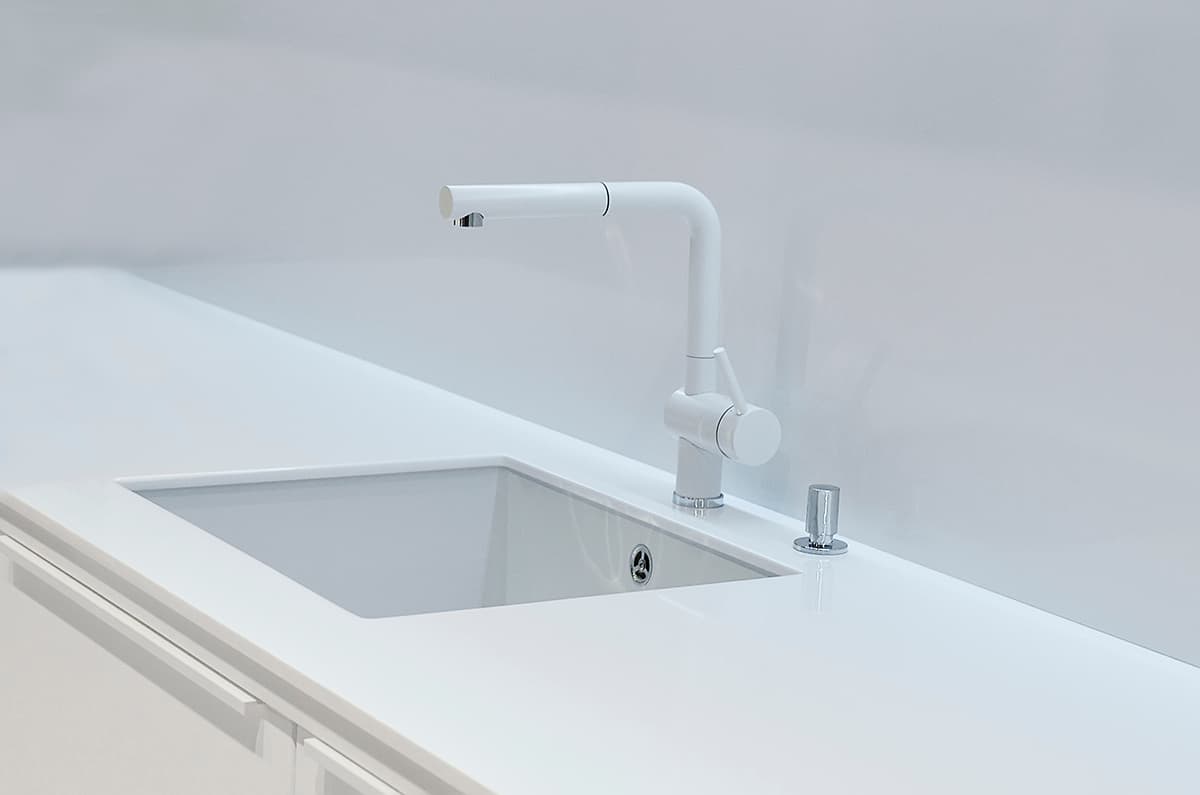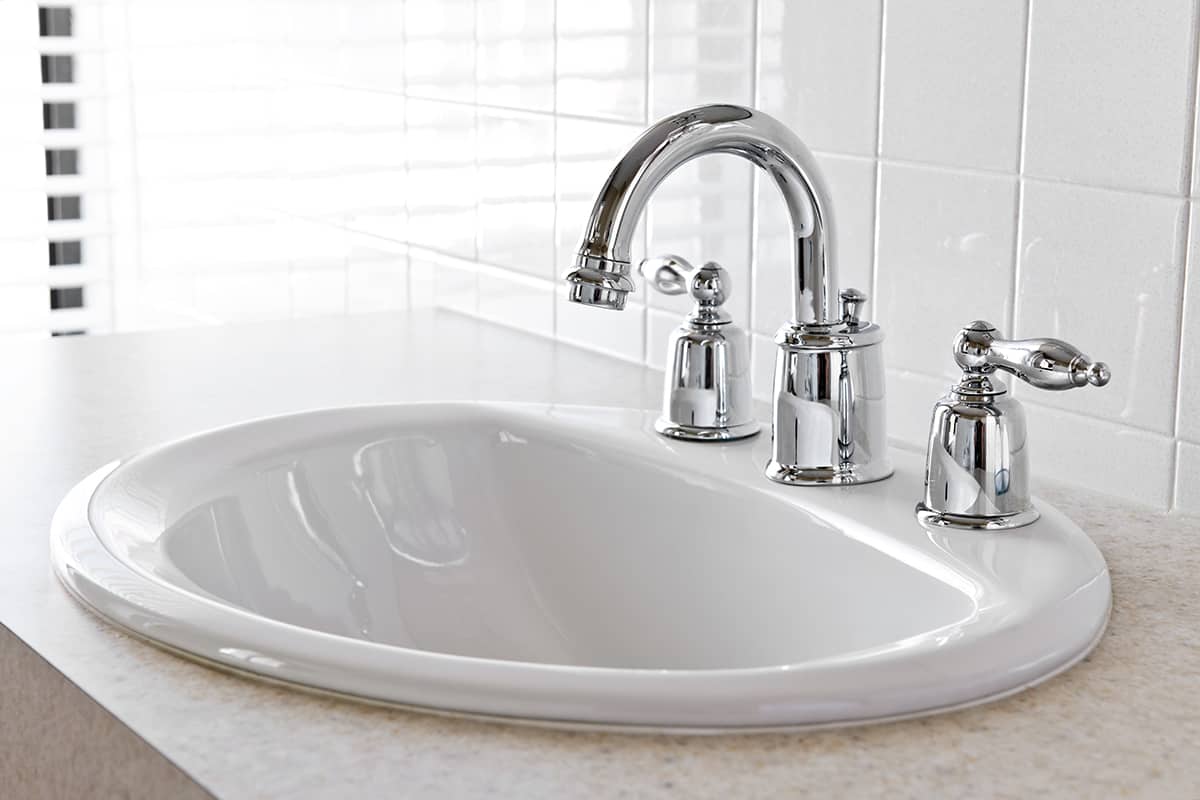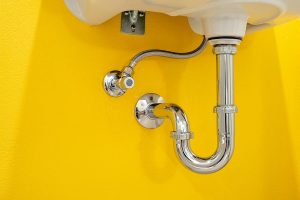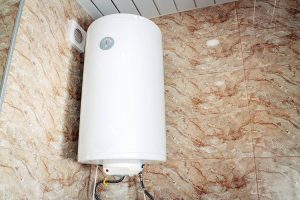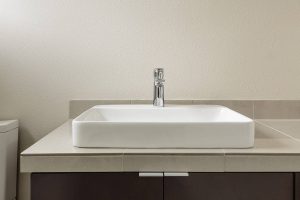The faucet hole in a bathroom or kitchen sink is what enables the faucet to be installed, so it’s important that the faucet you choose is compatible with the size of the hole in your sink.
Most types of sinks will have a standard-size faucet hole so that it can be used in conjunction with faucets from different manufacturers; however, there are some size discrepancies depending on who you buy your sink from and the model type.
As well as understanding how the size of the faucet hole correlates to the faucet you want to install, you will also need to be aware of the number of faucet holes in a sink and how these relate to your chosen faucet.
Here we will look in detail at the various faucet hole sizes and configurations, including standard faucet hole size, to enable you to effectively choose and install your kitchen and bathroom plumbing parts.
Faucet Hole Sizes
The standard size of a faucet hole is 1 ⅜ inch. This translates to 1.375 inches, or 35mm. Since this is considered to be the standard diameter of a faucet hole, you should assume that this is the measurement of your sink faucet hole unless the specification indicates otherwise.
If you have a standard-size faucet hole, you can expect that a standard-size faucet is going to easily fit with this sink.
The size of a faucet hole is standardized across bathroom sinks, kitchen sinks, washroom sinks, and laundry room sinks, so no matter what type of sink you are working with, you can install any type of standard sized faucet so long as your faucet hole is also the standard size.
If your faucet hole is not the standard size, then it will be detailed on the product packaging or listed in the specifications.
Fortunately, if the faucet hole on your sink is not a standard size, this does not mean that your faucet options are going to be limited; it just means you will need to pay closer attention when ordering the components for your sink and faucet.
Commonly, Moen will produce sinks with faucet holes that are slightly different from the standard size.
For example, some of their sink models have faucet holes measuring 1 ¼ inch and 1 ½ inch. Delta also tends to produce sinks with non-standard faucet holes. For example, 1 ¼ to 1 ½ inch.
If you want to play it safe, order your faucet from the same manufacturer as your sink, as this will ensure that they are going to fit.
However, if you are aware of the faucet hole in your sink, you can easily check the specifications when ordering a new faucet to see what size faucet hole it will be compatible with.
Faucet Hole Spacing
Bathroom sinks commonly only have one faucet hole because they tend to be equipped with smaller faucets.
However, kitchen sinks and some other types of sinks are widely available with a number of faucet holes. The amount of faucet holes in a sink indicates the type of faucet it is intended to be used with.
Single-hole
A single faucet hole in a sink will work with a single mixer tap. This is a type of tap that uses a lever or ‘mixer’ to move the water temperature from hot to cold instead of two separate handles.
Single mixer taps are a popular choice in contemporary kitchens because they have a sleek, minimalist look. They are also considered to be easier to use because they only require one hand to operate both the hot and cold at the same time.
If you want a single mixer tap, but your sink has more than one hole in it, then you can use an escutcheon to cover the other holes.
An escutcheon is a type of plate made in the same material and finish as your faucet, which fits around the base of the faucet to hide any holes in the sink.
This is a good solution if you want to make a single-hole faucet work with a multiple-hole sink, but ideally, choose a single-hole sink with a single-hole tap for a sleeker, better finish.
Two holes
If there are two faucet holes in your sink, then these will be for a single mixer tap along with a sprayer hose or a single mixer tap along with a fixed soap dispenser.
One hole will be central, and this is intended for use with the faucet, while the other hole will be slightly off-center.
Centerset three-hole
A sink with three faucet holes is one of the most common configurations for kitchen sinks. The three holes are for a central spout and a hot and cold handle on either side.
If the distance between the two outer holes is 4 inches, then this means the holes are centerset, and you will need a centerset faucet.
Mini spread three-hole
A mini spread three-hole faucet will also work on a sink that has three holes, with the outer two being 4 inches apart.
The only difference between a centerset and a mini spread faucet is that the centerset will have a plate so that the faucet appears to be one single item, while the mini spread doesn’t have a plate and therefore appears as three separate pieces.
Widespread three-hole
If the sink has three holes, and the outer two holes are more than 4 inches apart, then you will need a widespread faucet. Widespread faucets will have handles that are spaced considerably further from the central spout, with a distance between the outer two holes of between 6 and 18 inches.
Four holes
A four-hole sink will have three holes intended for the faucet and an additional hole for either a sprayer hose or a fixed soap dispenser. With a four-hole sink, the same measurements apply to decipher if you need a centerset, mini spread, or widespread faucet.
